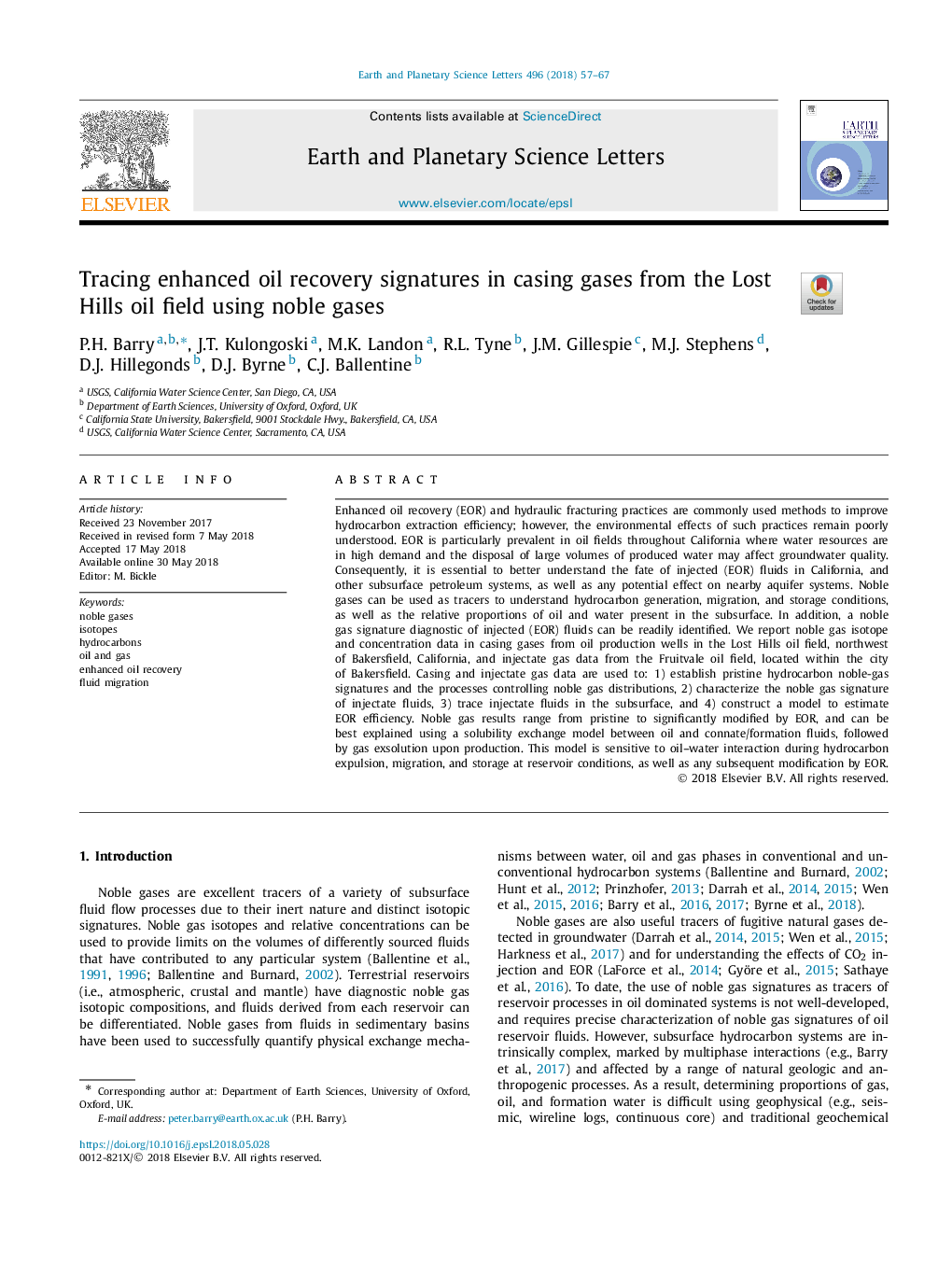| کد مقاله | کد نشریه | سال انتشار | مقاله انگلیسی | نسخه تمام متن |
|---|---|---|---|---|
| 8906770 | 1634660 | 2018 | 11 صفحه PDF | دانلود رایگان |
عنوان انگلیسی مقاله ISI
Tracing enhanced oil recovery signatures in casing gases from the Lost Hills oil field using noble gases
ترجمه فارسی عنوان
ردیابی امضا های بازیابی نفت افزایش یافته در پوشش گازها از میدان نفتی تپه ها با استفاده از گازهای نجیب
دانلود مقاله + سفارش ترجمه
دانلود مقاله ISI انگلیسی
رایگان برای ایرانیان
کلمات کلیدی
گازهای نجیب، ایزوتوپها، هیدروکربن ها، نفت و گاز، بهبود عملکرد روغن، مهاجرت مایع،
موضوعات مرتبط
مهندسی و علوم پایه
علوم زمین و سیارات
علوم زمین و سیاره ای (عمومی)
چکیده انگلیسی
Enhanced oil recovery (EOR) and hydraulic fracturing practices are commonly used methods to improve hydrocarbon extraction efficiency; however, the environmental effects of such practices remain poorly understood. EOR is particularly prevalent in oil fields throughout California where water resources are in high demand and the disposal of large volumes of produced water may affect groundwater quality. Consequently, it is essential to better understand the fate of injected (EOR) fluids in California, and other subsurface petroleum systems, as well as any potential effect on nearby aquifer systems. Noble gases can be used as tracers to understand hydrocarbon generation, migration, and storage conditions, as well as the relative proportions of oil and water present in the subsurface. In addition, a noble gas signature diagnostic of injected (EOR) fluids can be readily identified. We report noble gas isotope and concentration data in casing gases from oil production wells in the Lost Hills oil field, northwest of Bakersfield, California, and injectate gas data from the Fruitvale oil field, located within the city of Bakersfield. Casing and injectate gas data are used to: 1) establish pristine hydrocarbon noble-gas signatures and the processes controlling noble gas distributions, 2) characterize the noble gas signature of injectate fluids, 3) trace injectate fluids in the subsurface, and 4) construct a model to estimate EOR efficiency. Noble gas results range from pristine to significantly modified by EOR, and can be best explained using a solubility exchange model between oil and connate/formation fluids, followed by gas exsolution upon production. This model is sensitive to oil-water interaction during hydrocarbon expulsion, migration, and storage at reservoir conditions, as well as any subsequent modification by EOR.
ناشر
Database: Elsevier - ScienceDirect (ساینس دایرکت)
Journal: Earth and Planetary Science Letters - Volume 496, 15 August 2018, Pages 57-67
Journal: Earth and Planetary Science Letters - Volume 496, 15 August 2018, Pages 57-67
نویسندگان
P.H. Barry, J.T. Kulongoski, M.K. Landon, R.L. Tyne, J.M. Gillespie, M.J. Stephens, D.J. Hillegonds, D.J. Byrne, C.J. Ballentine,
